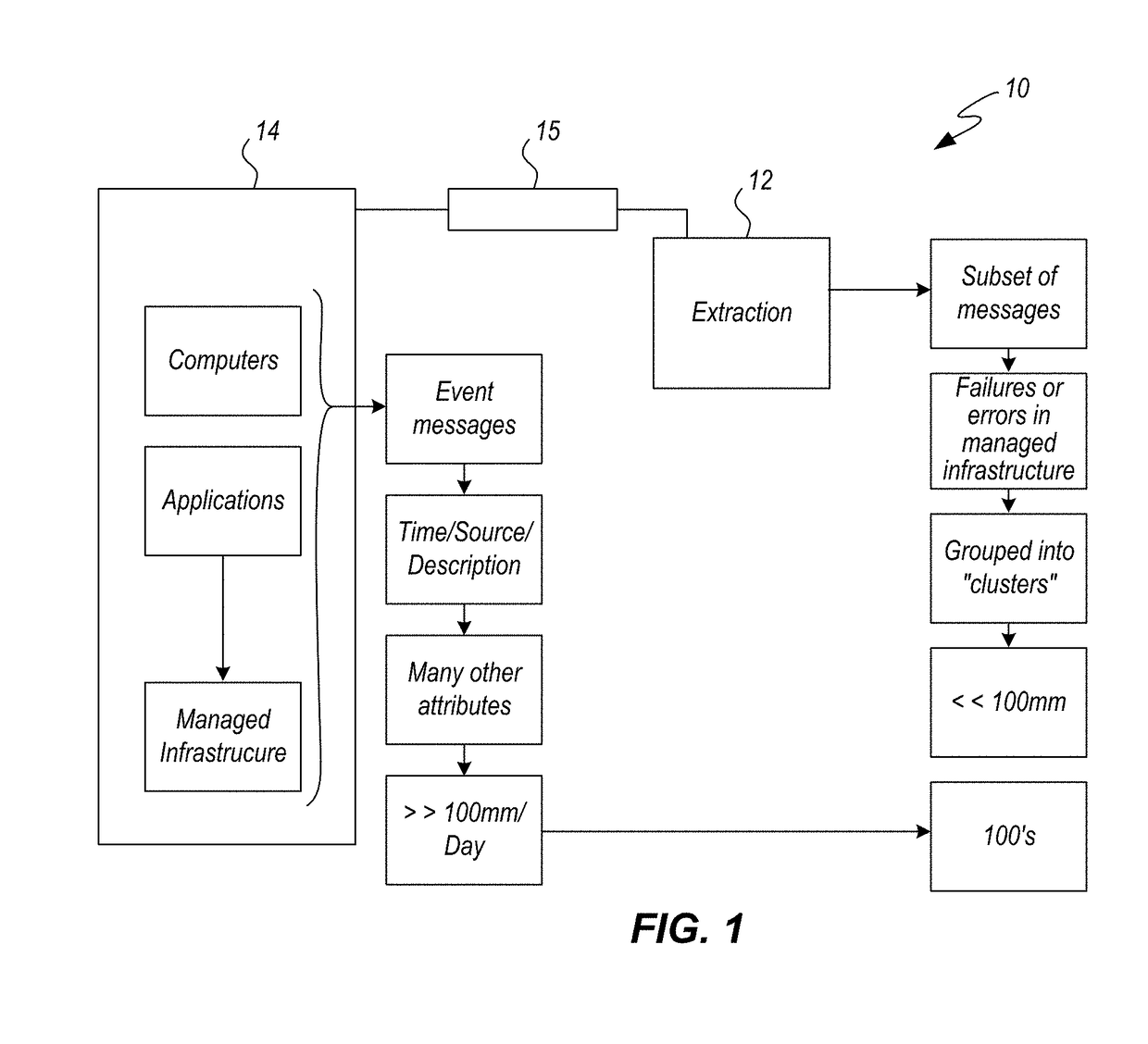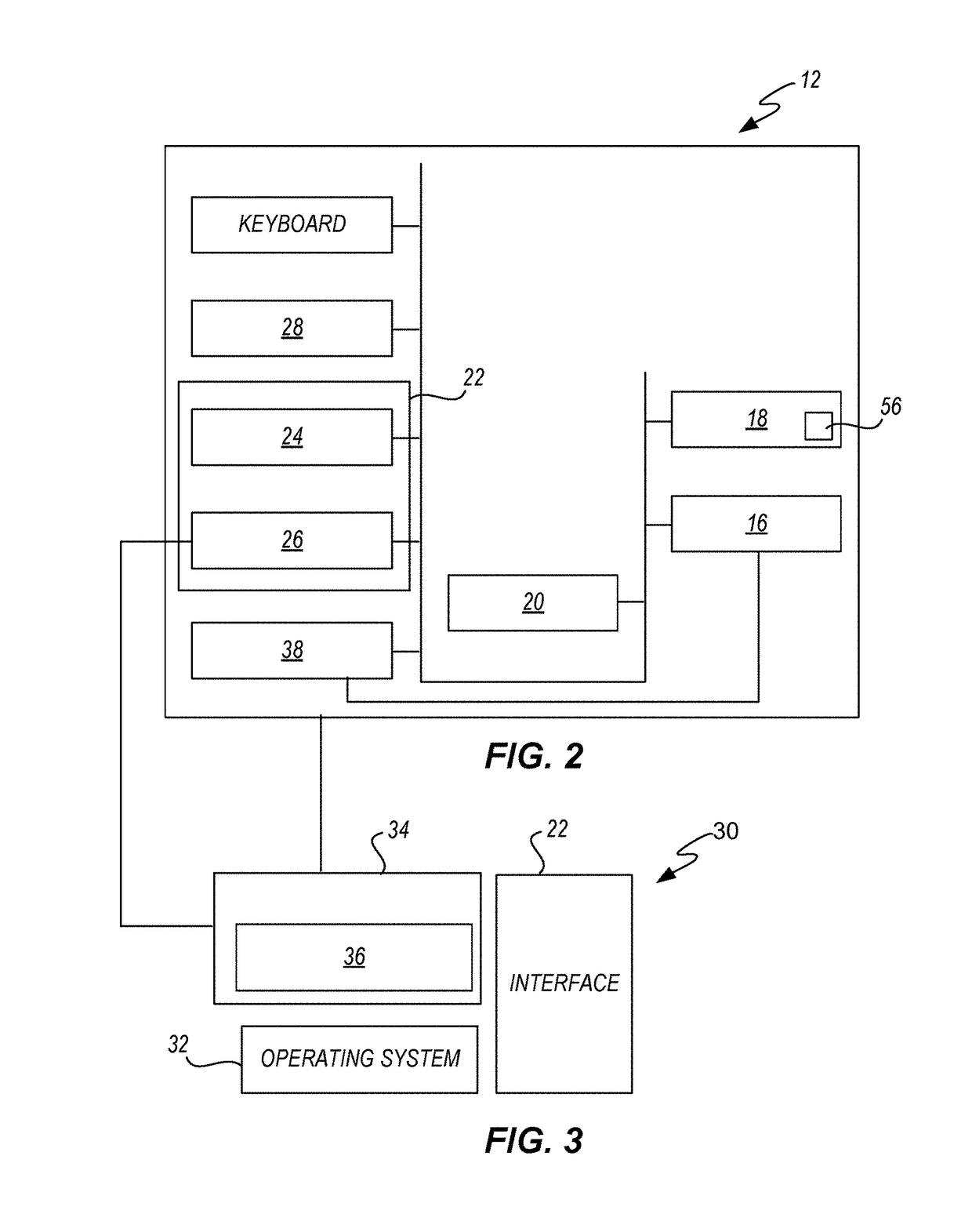System for decomposing events from managed infrastructures with semantic clustering
- Summary
- Abstract
- Description
- Claims
- Application Information
AI Technical Summary
Benefits of technology
Problems solved by technology
Method used
Image
Examples
example 1
[0155]As a non-limiting example, the NMF algorithm can be executed as follows:
[0156]Let Mij be an x p non-negative matrix, (i.e., with M>0, and k>0 an integer). Non-negative Matrix Factorization (NMF) consists in finding an approximation
X=W H (A B) (1)
where W, H are n k and k p non-negative matrices, respectively. In practice, the factorization rank r is often chosen such that r<
[0157]The main approach to NMF is to estimate matrices W and H as a local minimum: 1) M=A B
[0158]A, B seed randomly tentatively adjusts I until the Frobenius distance
∥M−A B∥ is minimized
[0159]where
[0160]D is a loss function that measures the quality of the approximation. Common loss functions are based on either the Frobenius distance or the Kullback-Leibler divergence.
[0161]R is an optional regularization function, defined to enforce desirable properties on matrices W and H, such as smoothness or sparsity.
example 2
[0162]As a non-limiting example, a k-means algorithm is used as follows:
[0163]Given a set of event vectors (x1, x2, . . . , xn), where each observation is a d-dimensional real vector, k-means clustering aims to partition the n observations into k sets (k≤n) S={S1, S2, . . . Sk} so as to minimize the within-cluster sum of squares (WCSS):
argmins∑i=1k∑xj∈Sixj-μi2
[0164]where μi is the mean of points in Si.
[0165]In one embodiment, illustrated in FIGS. 13A and 13B a dashboard 410, associated with a situational room, is included which allows entities and / or people to manipulate messages / events 40 from managed infrastructure, alerts or events 40.
[0166]As a non-limiting example an alert engine 411 receives the events 40 and creates alerts that are mapped into a matrix “M” of events 40, as illustrated in FIG. 14. As a non-limiting example, Mik is the matrix of events 40.
[0167]In one embodiment of the situation room 336, as illustrated in FIG. 1, (a) system 10 is provided for creating, and dis...
example 3
[0286]irb(main):003:0>p1.simhash
⇒851459198
[0287]00110010110000000011110001111110
[0288]irb(main):004:0>p2.simhash
⇒847263864
[0289]00110010100000000011100001111000
[0290]irb(main):002:0>p3.simhash
⇒984968088
[0291]00111010101101010110101110011000
[0292]In the preceding the hamming distance of the simile ms (p1,p2)=4
[0293]whereas (p1,p3)=16 and (p2,p3)=12
[0294]The simhash of a phrase is calculated as follow.
[0295]pick a hashsize, let's say 32 bits
[0296]let V=[0]*32 ft (i.e. 32 zeros)
[0297]break the phrase up into features
[0298]irb(main):003:0>‘the cat sat on the mat’. shingles
[0299]⇒#
[0300]“s”, “sa”, “o”, “on”, “n”, “t”, “m”, “ma”}>
[0301]hash each feature using a normal 32-bit hash algorithm
[0302]“th”.hash=−502157718
[0303]“he”.hash =−369049682
[0304]for each hash if biti of hash is set then add 1 to V[i]
[0305]if biti of hash is not set then take 1 from V[i]
[0306]simhash biti is 1 if V[i]>0 and 0 otherwise simhash are useful because if the simhas...
PUM
 Login to View More
Login to View More Abstract
Description
Claims
Application Information
 Login to View More
Login to View More - R&D
- Intellectual Property
- Life Sciences
- Materials
- Tech Scout
- Unparalleled Data Quality
- Higher Quality Content
- 60% Fewer Hallucinations
Browse by: Latest US Patents, China's latest patents, Technical Efficacy Thesaurus, Application Domain, Technology Topic, Popular Technical Reports.
© 2025 PatSnap. All rights reserved.Legal|Privacy policy|Modern Slavery Act Transparency Statement|Sitemap|About US| Contact US: help@patsnap.com



